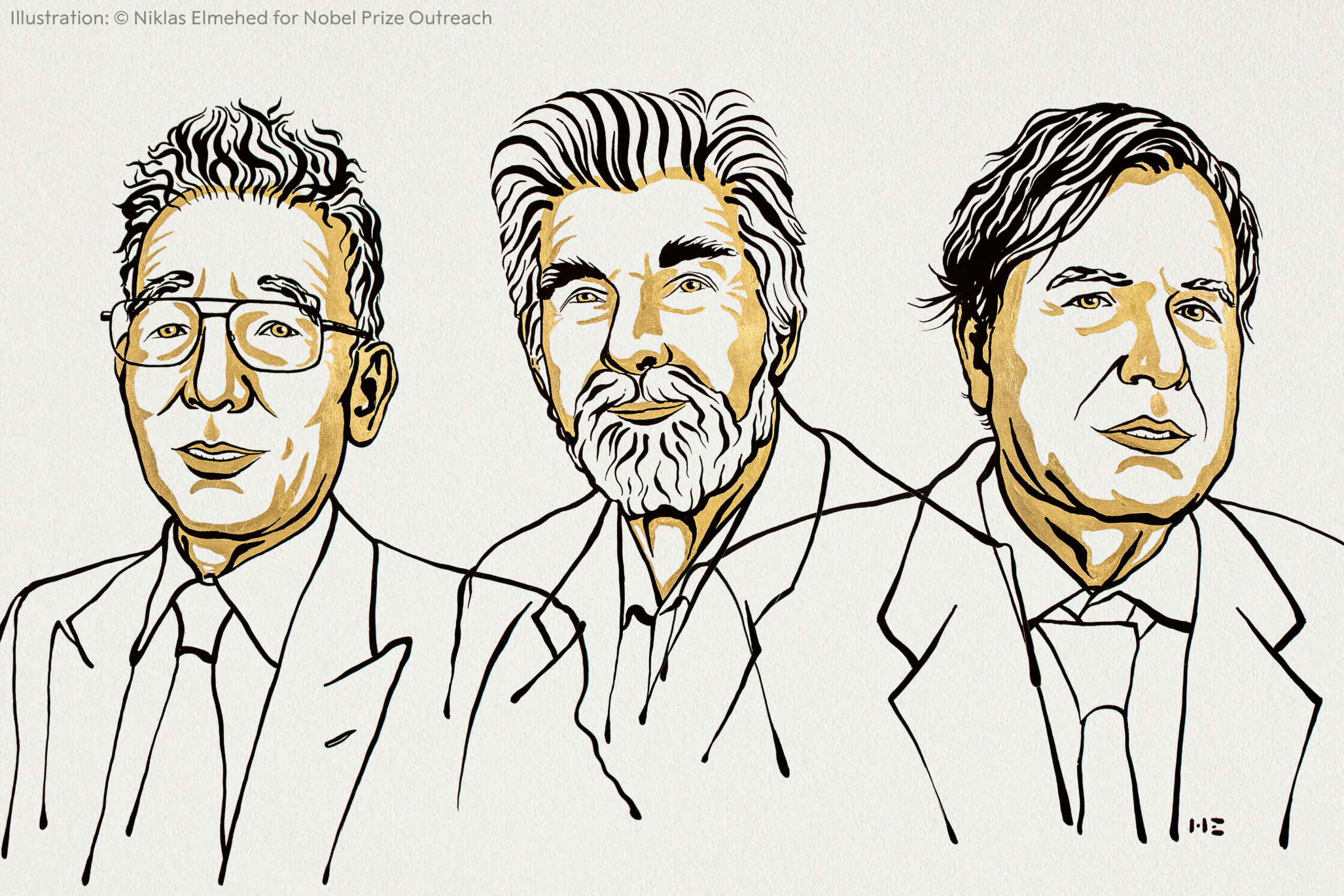Scientists studying climate and disordered materials win Nobel Prize in Physics
Researchers who examine complex systems were recognized for their contributions.
Tatum McConnell • October 5, 2021

Syukuro Manabe, Klaus Hasselmann, and Giorgio Parisi, winners of the 2021 Nobel Prize in Physics. Niklas Elmehed © Nobel Prize Outreach
Three scientists will share the 2021 Nobel Prize in Physics, which was awarded this morning for work on climate and disordered physical systems.
Syukuro Manabe of Princeton University and Klaus Hasselmann of the Max Planck Institute for Meteorology in Germany were recognized for their contributions to climate modeling, and Giorgio Parisi of Sapienza University in Italy was recognized for his work on disordered systems.
Manabe’s groundbreaking work on climate modeling in the 1960s “made the first reliable prediction that if you double the carbon dioxide in Earth’s atmosphere the surface temperature would increase by 2 degrees celsius,” said John Wettlaufer, member of the Royal Swedish Academy of Science Nobel Physics Committee, during the announcement. As governments, businesses, and other groups set emissions reduction targets this number is front and center. Avoiding 2 °C or even 1.5 °C warming could prevent the worst potential impacts of climate change.
Hasselman used chaos theory, a way of describing the apparent randomness in physical systems, to understand the connection between weather and climate in the 1970s. His work has been used to help prove that human emissions of carbon dioxide have contributed to rising temperatures in the atmosphere, according to the press release announcing the awards.
Parisi “asked questions about apparently banal materials like glass that were deep, and impacted many areas of physics,” said Wettlaufer. Glass is unique in that it acts as both a solid and a liquid, flowing slowly over time. Parisi’s work around 1980 improved understanding of this kind of disordered system, and it has been applied to broad disciplines including neuroscience and computing.
While the physics of climate change and glass may seem far apart, “there is the common theme that has to do with disorder [and] fluctuations,” explained Thors Hans Hansson, chair of the Nobel Committee for Physics. Hansson also said the Nobel Committee wanted to send a message that “the modeling of climate is solidly based in physical theory and well-known physics.”
In a live phone call during the award announcement, Parisi described his reaction to winning the prize: “Well, I was very happy…I was not really expecting the news…I kept the telephone near me but I was not expecting a phone call.”
1 Comment
Fascinating! Congrats to the recipients! Can’t wait to read more about their research.